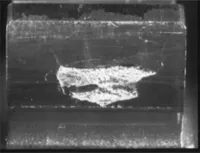Gearbox Resource Efficiency Based on Comprehensive Knowledge of the Growth of the Service-Life-Limiting Damage Pitting
Research Topic
| Short Title | PITTING |
| Start of Project | Q4/2024 |
| Funding | DFG-Nr. 538825406, STA 1198/29-1 German Research Foundation, DFG |
| Contact | M. Geitner, M.Sc. |
Project Description
Gears are one of the most significant machine elements. They are a part of tiny clock mechanisms and gigantic cement mills. Pitting is a damage mechanism of gears caused by the stresses in the tooth contact, leading to the break-out of surface parts. In certain cases, a minor pitting damage does not require immediate action, but if it proceeds to grow, the damage will cause a total breakdown and stop of the machine.

For decades, the damage mechanism pitting has been the subject of research and international standards. The main objective of this was the general appearance of the damage. The damage behavior, starting with an initial small pitting and ending with the breakdown of the gear, is largely unresearched. Quenched and tempered gears usually have a continuous growth of pitting and are not widely covered by the state of knowledge. This kind of gear is, for example, applied in the cement industry. This industry causes nearly 8% of the global CO2 emissions. Even small optimization of the processes and machines within this industry have the potential for significant climate protection.
The objective of this research project is to develop a method to simulate the growth of pitting damages caused by different loads. Based on the created possibility to predict the damage, it is planned to derive optimized operating strategies for the gears. The main objective of these strategies is to fully use the service life potential of the gears. To ensure reliability and safety, the stochastics of the damage growth is a major focus of the research project. Such a method could enable the extension of the service life of gears and, therefore, reduce their carbon footprint.